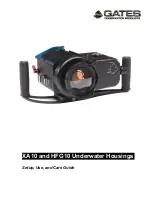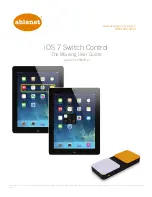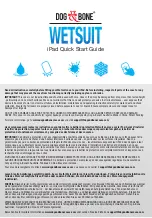
pH Adaptor & Electrode
5
Troubleshooting
If the sensor loses Bluetooth connection and will not reconnect try
1.
Closing and reopening the EasySense2 software.
2.
Close the EasySense2 software. Switch the sensor Off and then On again (To switch off: Press and
hold down the On/Off switch for about 2 seconds until the white light is lit solidly then release.
To switch back on: Press the On/Off switch (blue LED will flash). Reopen the EasySense2
software.
3.
If you are using a Bluetooth Smart USB Adaptor unplug the adaptor, plug back in again and try to
reconnect.
4.
Hard reset the sensor and then try to reconnect.
Electrode preparation
1.
With the electrode vertical, unscrew the storage bottle’s plastic cap before
removing the electrode from the storage solution.
2.
Wash the glass membrane and liquid junction area (the lower section of the
electrode) thoroughly with de-ionised or distilled water to remove any salt
deposits from the exterior of the electrode.
3.
Hold the electrode up to the light and check that the bulb at the tip of the
electrode (glass membrane) is full of electrolyte. If air bubbles are present
they can be removed by shaking the electrode firmly in a downward motion
(like a clinical thermometer).
4.
Screw on the clear plastic protective skirt if it’s not already attached.
5.
Connect the pH electrode to the pH adaptor (line the pins up to the slots, push
in and twist the electrodes BNC connector until it locks into place).
Note: To disconnect, twist the BNC connector in the opposite direction and pull.
Measurement procedure
1.
Connect the pH sensor.
2.
Rinse the electrode thoroughly in distilled water before use.
3.
Place the pH electrode in the sample to be tested, ensure the bulb is fully submerged.
4.
Allow the electrode sufficient time to stabilise and then start taking readings.
5.
Rinse the electrode between each measurement with either:
a portion of the next sample or
deionised or distilled water
6.
Dab or pat gently any excess water from the body of the electrode using a paper towel before
placing in the next sample.
Electrode storage
Maintain the level of pH electrode storage solution, the pH sensitive membrane must be kept wet.
Store the electrode in equal volumes of pH 4.0 buffer and 3.5 - 4 mol dm
-3
Potassium Chloride (KCl)
solutions (1:1 v/v).
Recipe: Add 29 g of KCl to 100 cm
3
of distilled water. Add 100 cm
3
of a pH 4 buffer solution.
Unscrew the
cap before
removing the
electrode
Never store the electrode in deionised or distilled water - this will cause migration of the electrode’s
fill solution.


































